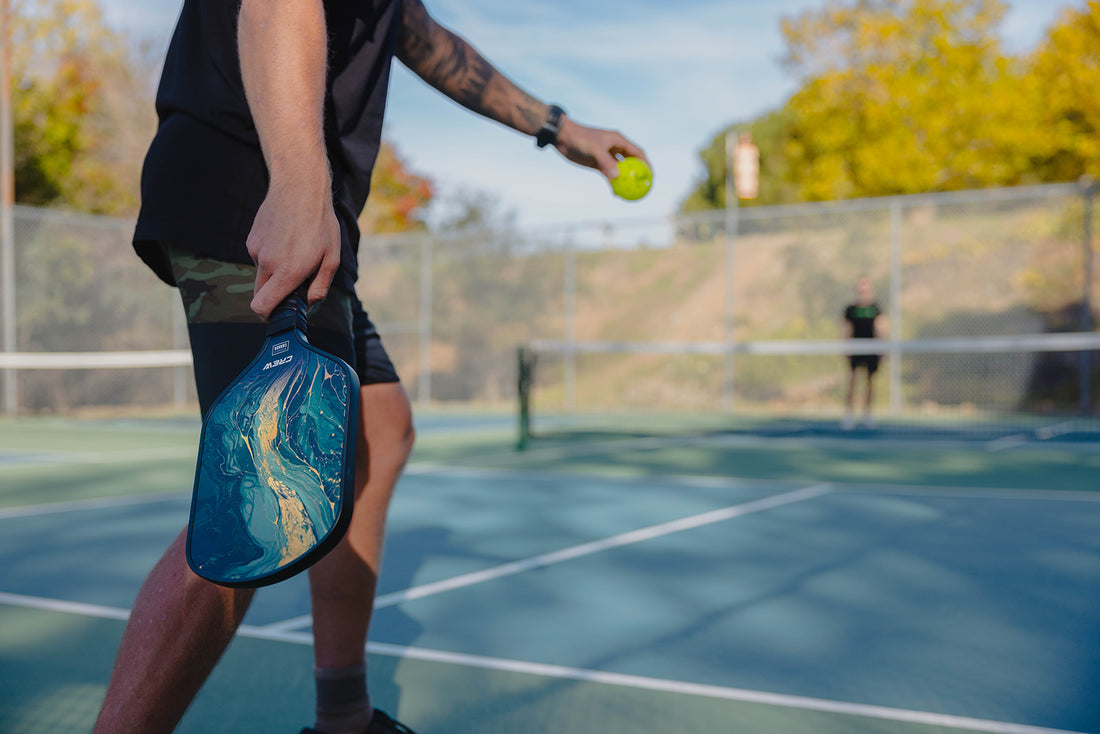Hey there, fellow pickleball enthusiasts! If you're just starting your journey into the wonderful world of pickleball or looking to upgrade your game, you've come to the right place. At Crew Pickleball, we understand that choosing the right paddle can be a bit overwhelming, especially for beginners. That's why we're here to help you navigate the exciting world of pickleball paddles and make an informed decision.
Paddle Core: The Heart of Your Paddle
Let's start with the core of your paddle, as it plays a pivotal role in determining how the paddle performs. Pickleball paddles typically come with two core materials: polypropylene (poly) and Nomex. Poly cores offer a softer and more forgiving feel, making them great for beginners. They provide excellent control and touch on the court. On the other hand, Nomex cores are known for their power and durability but can be less forgiving. We recommend poly cores for beginners as they offer a balance of power and control.
Paddle Surfacing: Hitting the Sweet Spot
Paddle surfacing comes in two primary types: graphite and composite. Graphite paddles are lightweight and offer excellent ball control. Composite paddles, made of materials like fiberglass, are a bit heavier and provide more power. For beginners, a composite paddle is a good choice because of the extra power it provides, helping you cover more ground and make solid shots.
Paddle Length: Finding Your Reach
Pickleball paddles come in various lengths, typically ranging from 15 to 17 inches. The most common size for recreational play is 15.5 inches. A longer paddle can help you reach balls at the net more easily, but it may sacrifice some maneuverability. Stick to a standard 15.5-inch paddle for starters until you're comfortable with your reach and mobility on the court.
Paddle Texture: Grip Matters
Texture on your paddle face can make a difference in your game. Paddles with a textured surface can provide better spin control. However, beginners might find smoother paddle surfaces more comfortable. As you gain experience, you can explore textured paddles to enhance your spin game.
Paddle Weight: Balancing Act
Paddle weight is crucial for both power and maneuverability. Lighter paddles are easier to control and maneuver, making them ideal for beginners who may need more precision. Heavier paddles, on the other hand, offer more power. Striking a balance is key. We suggest opting for a middle-weight paddle (around 7.5 to 8.5 ounces) to start with and adjust as you get more comfortable with your play style.
Paddle Thickness: Control vs. Power
Paddle thickness is all about control and power. Thicker paddles (usually 1/2 inch) provide more power but can be less maneuverable. Thinner paddles (typically 1/4 inch) offer more control but may require more effort to generate power. Beginners often prefer a medium thickness (3/8 inch) to strike a balance between control and power.
Grip Width and Length: Your Personal Touch
Grip width and length should match your hand size and playing style. Most paddles come with a standard grip size, which works for many players. However, it's essential to ensure that the grip feels comfortable in your hand. If it's too thick or too thin, it can affect your control and power. Adjust the grip with overgrips or replacement grips to make it perfect for your hand.
In conclusion, finding the perfect pickleball paddle as a beginner is all about balance. Consider your playing style, needs, and preferences when choosing a paddle. At Crew Pickleball, we offer a variety of options, and our customer service team is always here to assist you in making the right choice. So, grab your paddle, hit the court, and start your pickleball journey with confidence! Happy playing!

